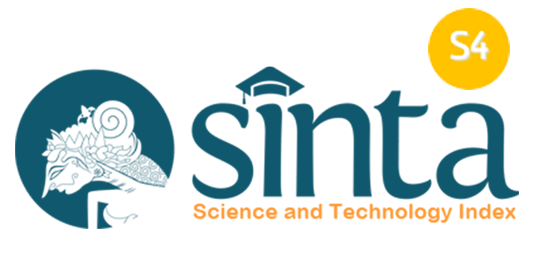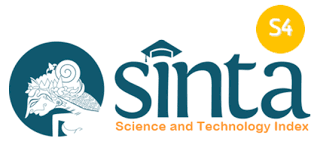THE POST-NAKBAH ARAB-ISRAELI CONFLICT (1948-1968)
NEW HISTORICISM VIEW ON GHASSAN KANAFANY'S 'AAEID ILA HAYFA
DOI:
https://doi.org/10.26740/paramasastra.v12n1.p82-100Keywords:
New Historicism, Aid Lla Hayfa, collective trauma, identity struggleAbstract
This research aims to describe the representations of history, political and social identity in the novel 'Aaeid Ila Hayfa' by Ghassan Kanafany. Using the New Historicism approach of Stephen Greenblatt's New Historicism, this analysis focuses on the interaction between literary texts and the historical-political contexts that surround it. The novel tells the story of the return of Said and Safiyya's return to Haifa after the Nakba of 1948, which is also a representation of resistance to colonialism. Representation of resistance to colonialism, identity crisis and loss of property rights experienced by the Palestinian people loss of property rights experienced by the Palestinian people. This analysis will be carried out by comparing the novel's narrative with relevant historical documents. The findings of this research shows that 'Aaeid Ila Hayfa' is not only a fictional narrative, but also as a medium to represent the collective trauma of the Palestinian people and their trauma and their struggle to maintain their national identity.
References
Amara, M. (2015) Hebraization in the Palestinian language landscape in Israel. In B. Spol-sky, O. Inbar-Lourie and M. Tannenbaum (eds) Challenges for Language Educationand Policy. New York: Routledge
Barry, Peter (2002). Beginning Theory: An Introduction to Literary and Cultural Theory. Manchester dan New York: Manchester University Press.
Brannigan, John (1998). New Historicism and Cultural Materialism. New York: St. Martin’s Press.
Chahid, Abdelfattah (2024). Cultural and Literary Studies: An Attempt to Enrich the Arabic Literary Lesson. DÂD: Journal of Arabic Linguistics and Literature, 5(9), 9–33. Sultan Moulay Slimane University, Morocco.
Demsky, A. (2018). The Hebraization of Names in Modern Israel. xxv(i), 67–81.
Eldridge, John & Eldridge, Lizzie (1994). Raymond Williams: Making Connection. London & New York: Routledge.
Greenblatt, Stephen (1989). "Towards a Poetics of Culture" dalam The New Historicism (H. Aram Veeser, Ed.). New York dan London: Routledge.
Greenblatt, Stephen (2018). Al-Tārīkhāniyya al-Jadīda wa al-Adab. Casablanca: Al-Markaz Al-Thaqafi Lil-Kitab.
Hall, Stuart (1990). The Emergence of Cultural Studies and the Crisis of Humanities, The Humanities as Social Technology, 53.
Hickling, Matt (2018). New Historicism. Brock Education: A Journal of Educational Research and Practice, 27(2), 53–57.
Kanafany, Ghassan (2013). Aāid‘ Ilā Ḥayfā. Beirut: Maṭba‘ah Kurkiy.
Bitan, H. (1992). Va‘adat ha-Shemot ha-Memshaltit, Jerusalem: Meḥqarim be-Yedi‘at ha-Areṣ ve-‘Atiḳoteha, 23, 366–370. http://www.jstor.org/stable/23623609
Knesset (1950). Absentees’ Property Law, 5710-1950: "Laws of the State of Israel: Authorized Translation from the Hebrew, Volume 4". 4(20), Jerusalem : Knesset, 68–82.
Masalha, Nur (n.d.). The Palestine Nakba: Decolonising History, Narrating the Subaltern, Reclaiming Memory. London: Zed Books.
Moleong, Lexy J. (2001). Metodologi Penelitian Kualitatif. Bandung: PT Remaja Rosdakarya.
Ofran, Hagit (2020). Annex and Dispossess: Use of the Absentees’ Property Law to Dispossess Palestinians of their Property in East Jerusalem. Peace Now.
Pappe, Ilan (2006). The 1948 Ethnic Cleansing of Palestine. 7175(141), 1–17.
Sa‘di, Ahmad H. & Abu-Lughod, Lila (2007). Nakba: Palestine, 1948, and the Claims of Memory. New York: Columbia University Press.
Said, Edward W. (1978). Orientalism. New York: Pantheon Books.
Tamari, Salim (Ed.) (2002). Jerusalem 1948: The Arab Neighbourhoods and Their Fate in the War. Jerusalem: Institute for Palestine Studies.
Williams, A. A. (2017). Al-Tārīkhāniyya al-Jayyida wa al-Dirāsāt al-Adabiyya. Majallat Fuṣūl, 99.
Downloads
Published
How to Cite
Issue
Section
 Abstract views: 472
,
Abstract views: 472
, PDF Downloads: 517
PDF Downloads: 517












